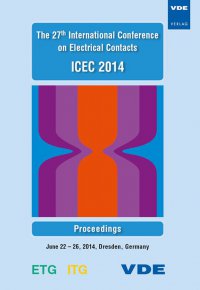Re-ignition and Post Arc Current Phenomena in Low Voltage Circuit Breaker
Conference: ICEC 2014 - The 27th International Conference on Electrical Contacts
06/22/2014 - 06/26/2014 at Dresden, Deutschland
Proceedings: ICEC 2014
Pages: 6Language: englishTyp: PDF
Personal VDE Members are entitled to a 10% discount on this title
Authors:
Hauer, Wolfgang (Eaton Industries (Austria) GmbH, Vienna, Austria)
Zhou, Xin (Corporate Research & Technology – Eaton, Pittsburgh, USA)
Abstract:
Re-ignition during short circuit interruption process is one of the most important phenomena circuit breaker design engineers have to deal with. It has direct impact on short circuit interruption performance, and is affected by various design parameters. Investigation has been carried out on re-ignition phenomena in this study. Two different re-ignition phenomena were observed. The first phenomenon is the so-called instantaneous re-ignition, where the interruption current (in the order of thousands of amperes) continues to flow after current zero crossing with reverse polarity. Test results show that a low “exit-voltage” usually leads to an instantaneous re-ignition. The second phenomenon is called “delayed re-ignition”. In this case the re-ignition of an arc takes place a certain time period after current zero crossing. During this period which can last up to several milliseconds, a low level post arc current ranging from a few hundred of milliamps up to several amps can be measured. The measurement results of the post arc current and the electric field strength along the contact gap reveal that a glow discharge in air at atmospheric pressure is established during the post-arc-period, followed by a glow-to-arc transition. Hypotheses of the physical process during delayed re-ignitions are proposed.


